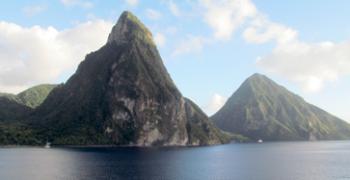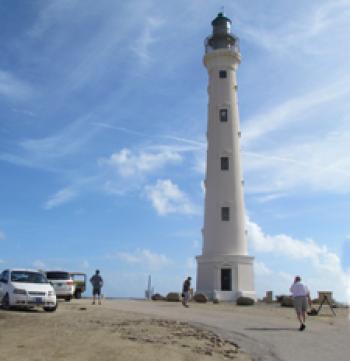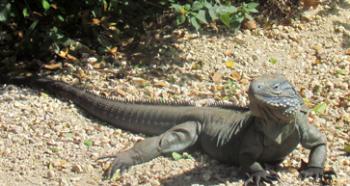Caribbean with Holland America
This item appears on page 47 of the June 2018 issue.
I embarked on a 14-day Caribbean cruise in January 2018, round trip from Tampa, Florida, aboard the MS Rotterdam, a ship in Holland America Line’s (Seattle, WA; 877/932-4259, www.hollandamerica.com) fleet of vessels.
Shortly before sailing, I accepted their offer of an upgrade from a Neptune to a Pinnacle suite, with over 1,100 square feet, including a verandah. I paid $17,000 and change for the cruise — about $9,000 less than I would have paid had I originally booked this suite. (I hosted a cocktail party at my quarters on our final day at sea.)
I booked this cruise prior to the hurricanes that devastated several Caribbean islands in the fall of 2017. Amid such luxurious surroundings on board, I felt somewhat guilty because of the immense suffering that had been inflicted on some of our destinations. Although the property damage resulting from these storms was nothing short of catastrophic, it pales in comparison to the loss of a single human life. The hearts of all Americans go out to those who were affected.
I booked two pre-cruise nights in Tampa and did sightseeing on my full free day.
On the cruise, our first stop was Key West, where a shore excursion would have included a coral reef and a glass-bottomed boat. However, the excursion was canceled a day in advance because of inclement weather.
Although the port city of San Juan, Puerto Rico, appeared to be in rather good condition, despite hurricane damage island-wide, my trip into the rainforest was canceled. The shore excursion I took instead featured Castillo San Cristóbal, a fortress built at the edge of the sea for defense against the English and Dutch.
I originally had scheduled a tour in Saint Thomas that included an aerial tramway, but shortly before my departure from home, Holland America emailed to say the tour had been canceled. The only feasible alternative for me was a drive around the island to an outlook and through Charlotte Amalie before returning to the dock, a visit which, in my opinion, was merely passable.
Named after Admiral Nelson of Trafalgar fame, a tour of Nelson’s Dockyard was the principal attraction of our jaunt on Antigua (part of Antigua & Barbuda). The dockyard, originally constructed for the maintenance of warships, now functions as a marina. We also traveled to the 18th-century Royal Artillery Gunners’ Barracks located at The Lookout on Shirley Heights.
Barbuda had sustained an extensive amount of hurricane damage, with 90 percent of the island destroyed, causing its entire populace to seek shelter on Antigua.
The excursion I booked on Saint Lucia included specimens of various flora. Although the tour was somewhat interesting, I was largely disappointed, since the venue for the plant life was a backyard as opposed to parkland.
In Curaçao, we started with a guided exploration of the 200,000-year-old Hato Caves. Anticipating a small cave, I was impressed by the sizes of the caves and their stalactite and stalagmite formations.
The second part of the tour covered Fort Amsterdam, the current seat of Curaçao’s government, which had been built in the 17th century as a military fort and served as headquarters of the Dutch West India Company. As an extra treat, an assortment of pleasantly colored buildings along the waterfront captivated my attention.
Aruba boasts an immense rock formation, but, given its many steps and the lack of a guard railing, I found the view from ground level to be just as rewarding.
We proceeded to a small chapel and then the rocky seacoast, where I captured a couple of sea-spray pictures on my camera and viewed a spectacular photograph of a natural bridge that had collapsed in 2005.
Our last stop on Aruba was the California Lighthouse, named for a vessel that was wrecked nearby during the late 19th century.
The Rotterdam’s final port of call before returning to Tampa was Grand Cayman, where the first phase of my day trip was visiting Pedro St. James (Pedro Castle), a restored, 18th-century manor house.
The gem of this excursion was a guided tour of a magnificent array of plants and flowers at the world-class Queen Elizabeth II Botanic Park. At the park, we also encountered a blue iguana, which, over time, we were told, turns from gray to a more pronounced shade of blue.
ROBERT A. SIEBERT
Jamaica, NY



